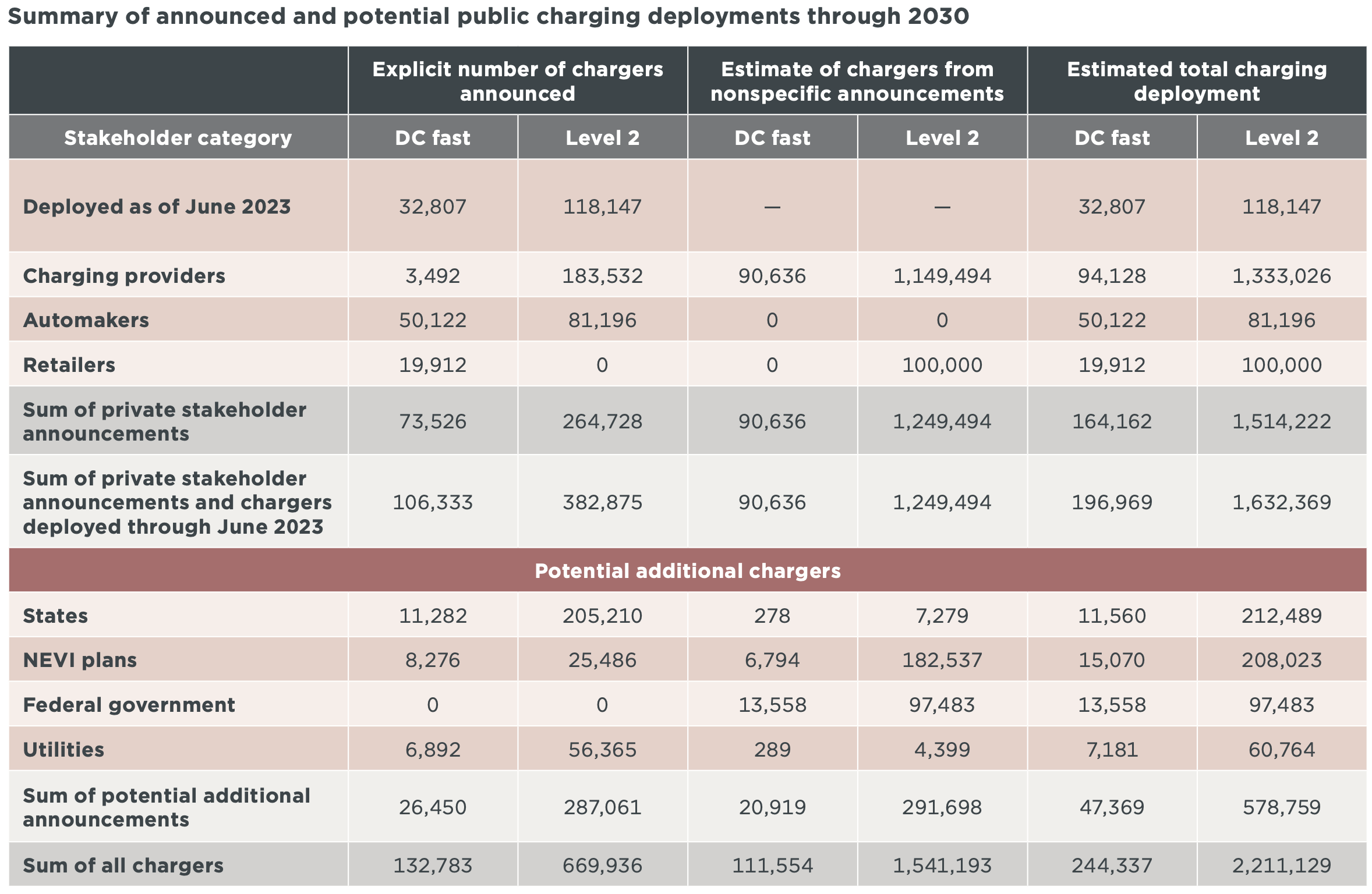Unveiling America’s ambitious EV charging plans for 2030

The focal point of this transformation lies in the deployment of both Direct Current Fast Chargers (DCFCs) and Level 2 chargers across the nation. With the electric vehicle market poised for exponential growth, the need for a robust and widespread charging infrastructure has never been more critical. The latest data reveals that efforts to meet this demand are not only on track but may surpass expectations in certain areas.
As of mid-2023, the United States had already seen the installation of a substantial number of public chargers, setting a solid foundation for future expansion. The detailed analysis, encompassing announcements from charging providers, automakers, retailers, and various government entities, indicates a significant leap forward in the public and workplace charging infrastructure.
Private stakeholders, including major EV charging network providers and automobile manufacturers, have laid out plans to introduce approximately 164,000 new DC fast chargers and 1.5 million new Level 2 chargers by the end of the decade. These numbers represent a mix of specific commitments and broader, non-specific pledges that collectively aim to address the burgeoning demand.
Moreover, the involvement of federal and state initiatives, particularly through the National Electric Vehicle Infrastructure Formula Program (NEVI), underscores the governmental commitment to facilitating the EV transition. The NEVI program alone is set to contribute significantly to the charger deployment efforts, with billions of dollars allocated for infrastructure development along key travel corridors and community spaces.
The anticipated outcome of these concerted efforts is a public charging network that not only meets the projected needs of EV owners but, in some cases, exceeds them. For DCFCs, the announced deployments could cover 182% of the demand by 2030, while for Level 2 chargers, the figure stands at approximately 62% to 84% of the forecasted requirements.
This expansion is not just about quantity; it’s about accessibility and convenience, paving the way for a seamless EV experience. The increase in charging capacity is expected to significantly boost electrical capacity, providing nearly all the non-home BEV charging capacity needed by 2030.
The findings from the ICCT highlights a path forward that could see the United States leading the charge in electric vehicle infrastructure, making EV ownership more viable for millions of Americans. With the private and public sectors working in tandem, the nation is gearing up for a greener, more sustainable future on the roads. As the electric vehicle market continues to evolve, the charging infrastructure is set to keep pace, ensuring that the transition to clean transportation is as smooth as possible for everyone.
Source: U.S. Electric vehicle charging needs and announced deployments through 2032 | The ICCT



